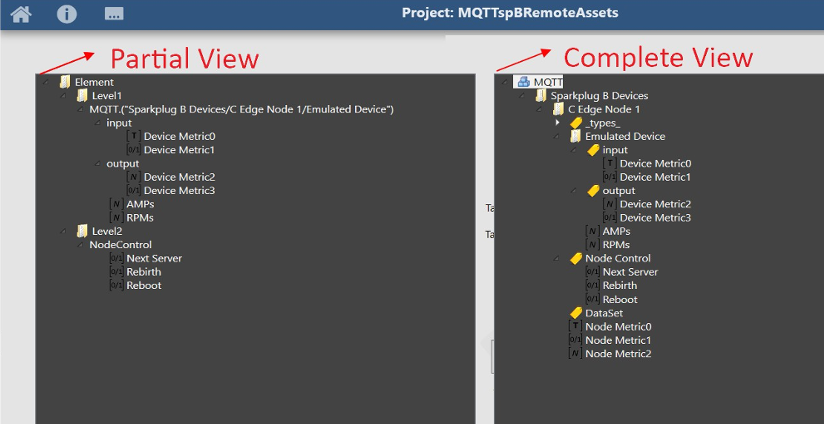Explore the broad functionalities and tools, our platform has out-of-box to speed up appositions around MQTT.
FrameworX
functionalities
Explore the broad functionalities and flexibility that MQTT integration brings to our software, from seamless data transmission to supporting the transformation of data in your projects. Our platform includes:
Built-in MQTT Broker
SparkplugB Publisher Simulator
Data Explorer Tools
MQTT Communication Drivers
Store and Forward Collector
Dynamic AssetTree Integration
Tag-level support for JSON packages
Dynamic Displays (Self-aware SCADA)
- Communication drivers for flat MQTT, SparkplugB, Azure IoT Hub.
- No-mapping, no configuration, connectivity using our exclusive feature of TagProviders
- Store-And-Forward, allowing reliable data colection and integration with Historian systems.
- Close technical work with HiveMQ, for large enterprise solutions.
- Methods to allow easy Json to Tag Templates conversion of payloads.
- Runs on Windows, Linux, Cisco Routers, Universal Robots, and any platform supported by NET 8.0.
- Client browsing Data Explorer Tools
Embedded MQTT Broker
Our included MQTT broker and clients help you get connected safely, securely, and economically to a wide and growing variety of devices and systems.
Highlighted Features:
- Connects with MQTT Clients following the SparkplugB specification or pure MQTT Clients
- Can execute on Windows, Linux, and any operating platform that supports NET 8.0
- Tied integration with FrameworX servers, exposing natively FX Tags on the Broker for client subscription.
- Speeds up the development of solutions, with no needing to setup extra modules or custom installs.
More information at Embedded MQTT Broker
HiveMQ Broker
HiveMQ provides High Performance scalable MQTT brokers for on-premises installations and cloud solutions.
Since our first integration test, it became our internal standard for large scale and cloud requirements.
Watch the joint HiveMQ webinar and learn more at HiveMQ Broker.
MQTT SparkplugB Publisher Simulator
The MQTTspB Simulator is integrate with the Data Explorer Tools.
We are releasing an MQTT Client simulator (with Sparkplug) to make testing easier and faster – testing for projects in general, testing for communication with the software platform MQTT Client, and for testing our new Dynamic Tag Provider functionality with MQTT.
Why struggle with multiple tools? With this simulator, you can easily publish 30k simulated values to the MQTT Broker – all from the same design environment.

Edge Store-And-Forward
Canary and MQTT
We added the Store-And-Forward functionality when our software platform publishes data to the Canary Historian or a MQTT Broker, which means we temporary store the data of a message for transmission to its destination at a later time, in case the network is not accessible for any reason.
This feature is crucial in data collection projects, where the data is sent to a remote repository.

MQTT Workshop
This workshop provides an overview of these tools and instructions on integrating them into your projects.
MQTT Data Explorer Tools
MQTT Tools, an integrated function in FrameworX, serves as a robust bridge for configuring and managing the transmission of MQTT data in various ways. It allows you to easily perform data mining and monitoring from various data sources.
To see more datails about this funcion, please see the Data Explorer page.

In this section: